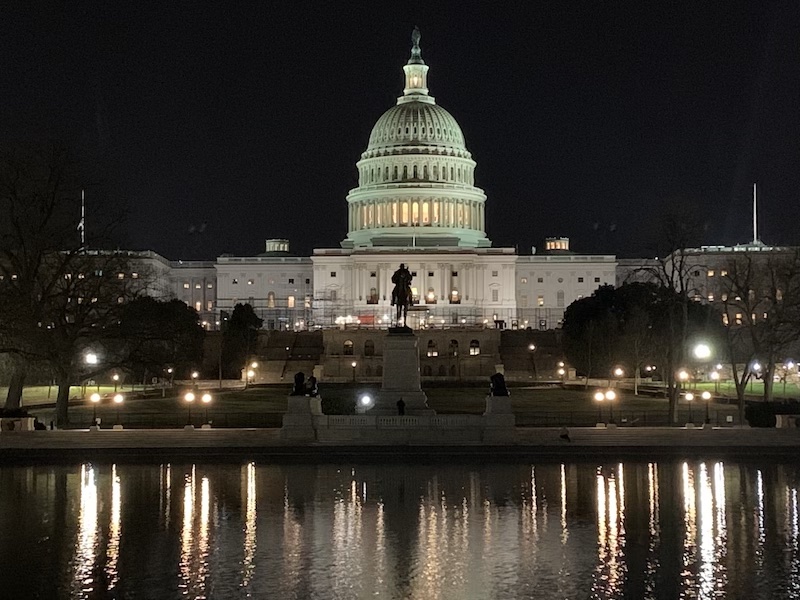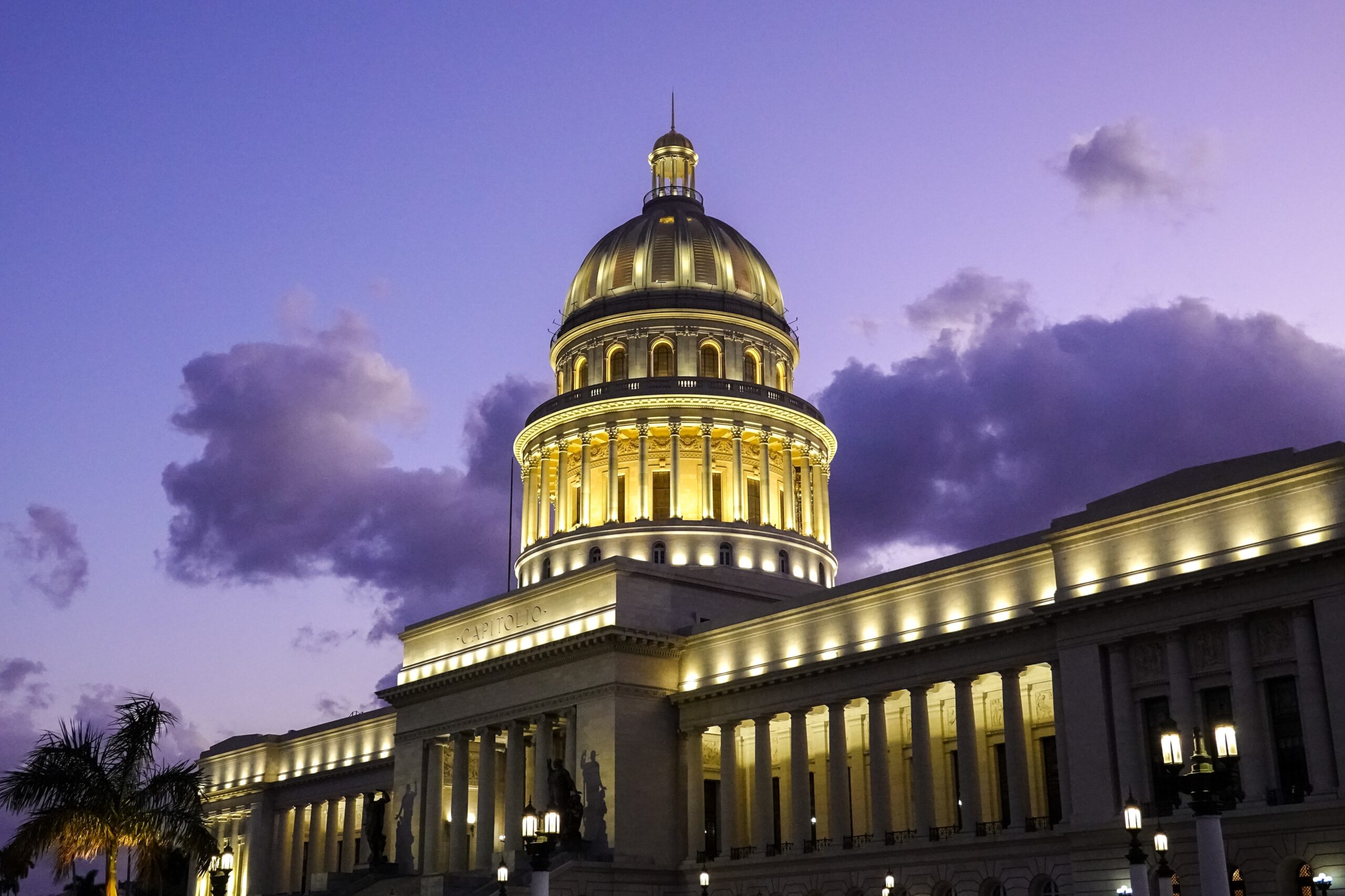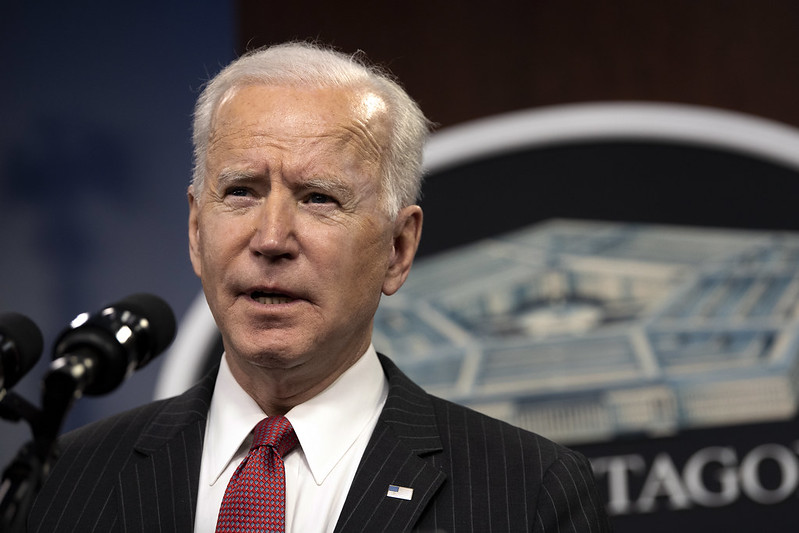(BATTLE GROUND, Wash.) — President Joe Biden took the podium for his first State of the Union tonight, with Congress gathered to hear his address. The specter of war in Ukraine hung over the Capitol, and Biden spent ample time lambasting the Russian aggression. He also detailed his administration’s efforts at home, including some words on education.
“Let’s increase Pell Grants and increase our historic support of HBCUs, and invest in what Jill—our First Lady who teaches full-time—calls America’s best-kept secret: community colleges,” said Biden. However, this was the only part of the speech related to higher education, and there was conspicuously no mention of one of his key campaign promises: Forgiving student loan debt.
In a response to the State of the Union, Rep. Rashida Tlaib, D-Mich., said Biden “can cancel federal student debt, which would be a lifeline for millions of Americans and a transformative economic stimulus.”
During his 2020 presidential campaign, Biden pledged to forgive at least $10,000 per student. Since taking office, calls have come to cancel even more. Many feel that forgiving student loan debt, which rose to a record $1.75 trillion last year, could help reinvigorate the U.S. economy, and help put young people on a path to financial stability.
Others consider it a “giveaway” to already privileged Americans and argue that the cost to taxpayers would be too high.
Yet many of those most affected by student debt are people who never finished college. “I’m drowning in debt for a piece of paper I never received,” Ashlee, a 27-year-old with $12,000 in loans told NPR in 2019.
Heather, 44, who defaulted on her student loans, told NPR she “can’t have a real mortgage” and has “unbelievable interest rates for vehicle loans.”
Further, there are the growing number of graduates who can’t get a high-paying job with their degrees.
Gallery: Scenes from Biden’s State of the Union. By Souhilla Moore and Theresa Boersma
John R. Brooks, a law professor, scholar, and writer, told me that some student debt forgiveness is “morally justified … or at the very least, shouldn’t be seen as some giveaway to a privileged group.” Brooks has written extensively about the student debt crisis, including the American Prospect article, The Big Student Loan Lie. The piece explains that many of the numbers being tossed around with regard to student debt (and the supposed costs of forgiving it) are largely “made up.”
“The simplistic idea that canceling x dollars means that the taxpayers are just willy-nilly giving x dollars to students is just wrong,” Brooks said. While he doesn’t suggest that this means all such debt should be immediately forgiven, he agrees with the argument that the government has a moral obligation to help relieve students of debt burden.
Brooks explained how student debt is treated by the federal government: When a student signs their promissory note, committing to pay back their loan at a certain rate of interest over a specified time, the government immediately banks that amount as revenue, and begins spending it. Then, if the student ends up paying less for some reason, that becomes a cost.
“Thinking about it as a cost to taxpayers, I thought, was very problematic,” said Brooks. Taxpayers are “financing a whole sector through the mechanism of individual student borrowing.”
“Debt is bad,” said Brooks, and the burden of student debt isn’t just financial. “People view that in moral terms. They say you have to pay it back, or you’re a bad person,” he said. A student’s debt can follow them around for years, even decades, making it difficult to buy a car, secure a mortgage, or even start a family.
Much of the Biden administration’s resistance to debt forgiveness has centered around the question of legal authority, or whether the executive branch has the power to erase student loans. The Debt Collective, a group advocating for a student debt “jubilee,” a clearance of debt from the public records, obtained documents through the Freedom of Information Act (FOIA). They appeared to show “Biden has likely known whether … he can legally cancel student debt since at least April”.
Brooks said that while the legality may be nuanced, “there is a good argument that the Higher Education [Opportunity] Act (HEOA) gives the Secretary of Education authority to … change the amounts of debt that are owed.” When asked if the same authority used by the Biden administration to pause student debt payments during the pandemic could be used to forgive that debt, he admits, “it’s an important point, because … they are already canceling payments.”
After a year marked by the failure to pass his signature Build Back Better bill, Biden missed an opportunity during his first State of the Union. With the free community college package now absent from Build Back Better, forgiving student debt may be the only way his administration can address the crisis.
With low approval numbers, inequality at its highest point in 50 years, increasing inflation, and sunsetting COVID relief packages, a student debt jubilee could have been a much-needed win.




